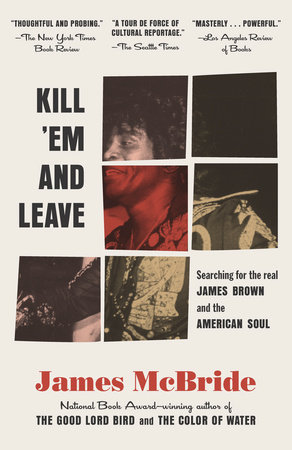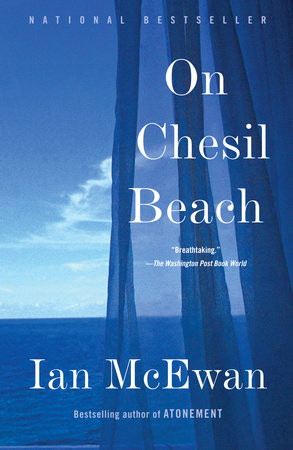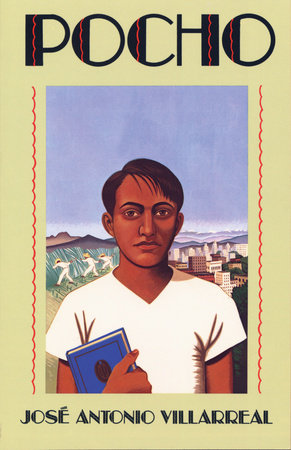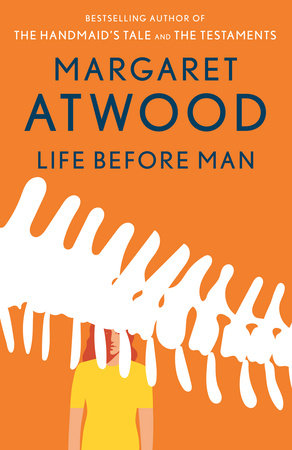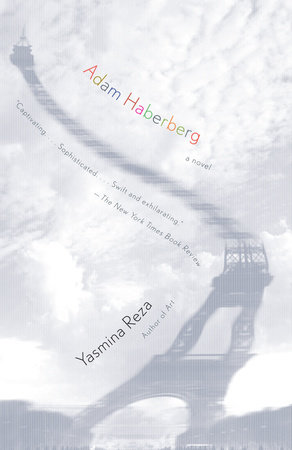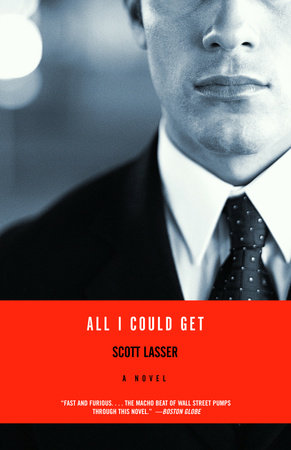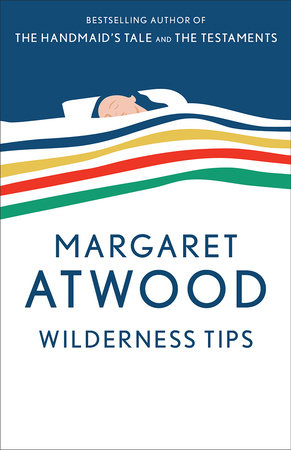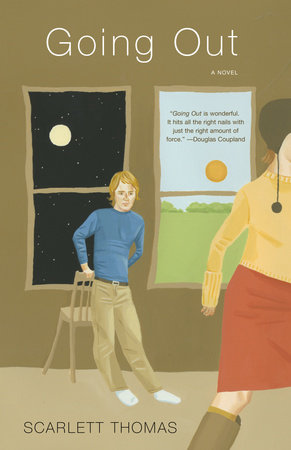A CONVERSATION WITH AMY TAN
Molly Giles is a longtime friend, mentor, and editor of Amy Tan’s. Her latest book is the novel Iron Shoes. She directs the Programs in Creative Writing at the University of Arkansas in Fayetteville.
Molly Giles: Some writers say their novels are inspired by a scrap of overheard conversation or by a single incident they have never been able to forget. You seem to work from things you’ve seen. You visualize and then often imaginatively inhabit scenes for your books before you write them. Can you talk about the image or images that inspired The Bonesetter’s Daughter?
Amy Tan: I was drawn by two images. One is the photograph of my grandmother, which always sat on my desk. My grandmother is around seventeen in the photo and in winter garb, to judge by the fur-lined high-neck collar. And she has on a remarkable hat! I am a hat person. Hats overflow and fall from the shelf of my closet, so I was drawn by this trait that she and I share. The second image was a blend of three colors: white, dark gray, and a vivid bloodred. I saw a snowy lane, the color of the sky, with red banners hanging from gates leading to courtyard homes. I knew that whatever I was going to write about, I wanted those colors and that scene to be in there. I wanted to follow that lane and enter one of those houses. I also have a fascination with caves, and while revising The Bonesetter’s Daughter, I decided to include imagery about excavations as a way to talk about memory. I had been lucky enough to meet the Chinese archaeologist who had led the team excavating Peking Man; he was about one hundred years old at the time, and his story fascinated me. Peking Man was, of course, not a complete skeleton of one man but the partial remains of thirty-seven men, women, and children. The first remains found, part of a skull, were actually from a woman. This had me thinking about how incomplete and fragile our memories are. We find bits and pieces of our own past or those of our parents and ancestors, and we try to re-configure these fragments in order to understand ourselves: how we came to be who we are.
MG: So you had all the “bones” of the novel–story fragments, ideas, and images. Working this metaphor to death, can you tell how you decided to organize this skeleton into a living body of fiction?
AT: I organized by voice. I knew the book needed a daughter’s voice and a mother’s voice. In the first thirty go-rounds, I interwove the two voices; one chapter was Ruth’s, the next was Lu-Ling’s. That (as you pointed out) was not working. Older women’s voices–and the voices of children–have always come more easily to me than those of women my own age. I wanted to hear the mother’s voice early on, and I knew she needed to express herself in first person, directly. I needed to hear her passion before it was debilitated by Alzheimer’s. So it occurred to me that I might write a prologue, penned by a woman fighting to hold onto her mind, starting with the line “These are the things I know are true.” I wanted her voice to allude to a secret and to its discovery, which then became the reason to tell the rest of the story.
After the prologue, I was able to return to Ruth and her present life, a modern life, which was failing in so many ways. That was the first part. The second part is then wholly LuLing’s. Using a journal that she might someday show her daughter helped me access Lu-Ling’s history and freed her voice. In the third section, I wanted to show Ruth moving forward with this new knowledge of her mother and grandmother.
MG: Ruth is such an anxious, sad worrywart of a person; I certainly identified with her! But did you? Are there traits of you in her? What autobiographical elements will you admit to using in this novel?
AT: Ruth’s anxiety is similar to mine. My mother saw danger in every gesture, in every unturned corner. I inherited her fears, had them reinforced by watching my brother and father die, and by other life events that told me: “See? Life is dangerous. You have to be careful. You have to prepare.” In 1976, my roommate and one of my dearest friends was murdered during a robbery. I had to identify the body, go through the room, look at the blood, and identify what was taken to the police. I thought I was pretty calm about it. His death had a huge impact on my life though. I quit my doctoral program to do something useful. I went to work as a program consultant, working with kids with developmental disabilities. The following year, I lost my voice on the exact date of my friend’s death. Laryngitis, I figured. The following year, the same thing happened. I felt fine, but I was completely mute. The next year, same thing. I realized that part of my body was reliving the unspeakable horror of what had happened. To this day, my body reminds me. Ruth also has things from her past that she cannot talk about, and once a year, she too falls mute with what she thinks is laryngitis. Other parts of the book draw directly from my life. Foremost is my mother’s experience with Alzheimer’s: what she did, what she said, the way she seemed to finally forget her sorrows, and, most important, the way she asked me to forgive her for terrible things she had done to me but could no longer remember. In writing, I always try to draw upon the emotional truth of my past experiences but never on the actual factual truth. I alter the details while trying to retain the sensual impact. This it seems to me is what fiction does and what makes it often more effective than straight biography or memoir. By the way, no one in my family has ever been a bonesetter, orthopedic surgeon, ink maker, or calligrapher. I researched these professions. I often use fiction writing as an excuse to do research. That’s the fun part. Going to the museums of your mind. As to the methods of bone setting, the medicines are based on old pharmacology and the methods are purely my imagination. So don’t try this at home.
MG: Is Precious Auntie based on a character in your family’s history?
AT: My inspiration for Precious Auntie derives from two people in my family. One is my grandmother’s cousin, who was known to my mother as “Precious Auntie.” My mother pointed her out to me in a photo; this young woman had once turned down a marriage proposal to a man who wanted her to be his second wife. She was pretty enough to be someone ’s first wife, she decided. Soon after, she contracted smallpox and her face was scarred. The man came back and asked her to be his wife again, only this time he wanted her for the number four position, since he already had a second and third wife. Since she had no other place to go, she accepted. Later, she killed herself. The other inspiration was my grandmother, my mother’s mother, who also killed herself. She died in China in l925 at the age of thirty-seven. Suicide reverberates through the generations, and I have played out in my mind many times what my grandmother felt when she decided to kill herself. In writing about Precious Auntie, I would look at the photo of my grandmother and try to understand her. I even wrote a scene about the day the photo was taken. It’s not based on anything that ever happened. Yet I needed to know why she had that faint smile, the distant look in her eyes.
MG: While working on the book, you were hit hard by two tragedies, the death of your mother and the death of your editor. Did writing The Bonesetter’s Daughter help you come to terms with your losses? How did the spirits of these women influence you?
AT: My mother and Faith Sale, my editor, died two weeks apart, so I was suddenly faced with the loss of two people I loved and who had always protected me. I felt great grief. Yet the experience of loss was also one of letting go of fears and uncertainties. I was at my mother’s side when she died, and it was a holy moment for me. It made me feel lighter. The book then became lighter, I think. Information surfaced during the last few weeks of my mother’s life. On the day of her death, with my half sisters and relatives from China gathered around, I learned what her given name had been at birth. It astounded me that I never knew that before–I, who was supposed to be the family historian. That same day I also learned for the first time what my grandmother’s given name had been. I already knew about my grandmother’s death, but I realized I knew nothing of her life, all its pains and hopes and lovely moments. These, like her real name, had been lost. These disclosures led me to think about all the characters whose true names have been lost. I wanted The Bonesetter’s Daughter to be about the discovery of our true names, our true pasts, and our true natures. As to whether or not I feel the spirits of Faith and my mother influencing me when I write: Yes. I do. I can still hear my mother’s voice (she is saying, “You better listen to me!”) and Faith’s. They guide me along. They are always present when I write, and I sense them, not as filmy ghosts, but as the wonderful strong voices they always were. I sense them in the same way anyone senses love and wonder.
MG: But you do believe in ghosts….
AT: I grew up with a mother who believed in everything–ghosts, curses, karma, reincarnation, Jesus, heaven, hell, the Devil’s work, and all God’s miracles. I was fortunate as a writer that she was this way, but as a child, I simply thought she was crazy. I thought I had gone down the wrong chute and landed in the wrong family. My father was a Baptist minister, and because he believed it was blasphemous to talk to ghosts, my mother kept it a secret that Christ wasn’t the only unseen guest at our dinner table. My mother also believed, as LuLing believed about Ruth, that I had the ability to see and talk to spirits, and she was especially keen that I communicate with my grandmother. As a child, I did not know that my grandmother had died by suicide, so I had little sympathy for my mother’s urgent desire to talk to her. But every now and then, I would say a phrase that reminded my mother of her mother. She was sure that I had been in contact and that I was keeping this information from her. When I started writing fiction for the first time, I wrote about my grandmother’s death. My mother read that story, and she asked me, “How did you know your grandmother was really the fourth wife? How did you know that this was the way she died?” I don’t know how I knew that. Did I overhear it as a child sitting at the kitchen table as my mother and aunts gossiped in Shanghainese? Or did my grandmother’s spirit plant ideas in my head? I do find that the more open I am to “help,” the more I receive. It’s as if my grandmother has done networking and come up with all the right research sources I need. Others might call that pure luck.
When I was fifteen years old, my brother and then my father died of brain tumors just six months apart, and my mother made me use the Ouija board to communicate with them. She wanted to know why we were cursed. I made up the answers at times, but there were also moments when the answers seemed to come from someone else. The knowledge seemed certain, loving, and not at all frightening.
So I was raised to both believe and doubt. As a consequence I am open to all possibilities, the true meaning of a skeptic–not a doubter, but someone who tries to let go of assumptions. I have seen ghosts, including my older brother and my mother. And those experiences are shockingly wonderful, a whump to the chest, a frisson that runs through my body and is filled with absolute love, pure peace, and complete understanding. I prefer to believe the spirits I saw were real. I do thank God, Buddha, and my lucky stars that I am a fiction writer, a person who makes a living from her imagination. If I tell people I believe in ghosts, they say, “Great!” instead of “uh-oh,” which would certainly be their reaction if I were, say, their doctor or their airline pilot.
MG: What is a “hungry ghost”? It is a phrase used often in the book.
AT: Chinese ghosts in traditional beliefs are thought to need food once in a while. Food is also a way that mothers express love. There is an actual festival day called “the feast of the hungry ghosts.” It’s the Chinese version of Memorial Day, when you go to the cemetery and weed the graves and also bring food offerings. When my brother died, my mother would bring bowls of dumplings to the grave. “Look,” she would say to him, “your favorite.” It embarrassed me and also made me cry.
MG: LuLing’s descent into Alzheimer’s–which is based on your own mother’s illness–is heartbreaking. Can you talk about what you learned about Alzheimer’s and how you coped?
AT: Like a lot of caregivers, I went to support groups. I did it anonymously by joining message boards on the Internet. We could talk about frustrations but also laugh about what the afflicted parent had done or said that was so off and yet so true. I learned through these groups that I was mighty lucky that I had the financial means to get my mother the care she needed, that I was extremely blessed our family was united, and that my friends loved seeing my mother at dinner in a restaurant though they had to take turns feeding her. The delusions were difficult on us. Once my mother held a belief, she could not let go of it. So I would have to join in with her, never arguing with what she thought, but entering her world, finding that knot of emotion, slowly untying it for her, while all along agreeing she was absolutely right to feel the way she did. Her delusions were often about conspiracies and loss of money, face, or trust in someone close to her. I learned that despite the very sad aspects of watching my very capable and sharp mother lose her abilities, she was able to lead a very emotional life right to the end. She adored being the center of attention. She remained proud of me and would show off to people in unabashed ways, saying, “This my daughter–she famous!” She also said in her last years words I never thought I’d hear: “I’m happy. I have no worries.”
MG: What help can you offer adult children who are caring for disabled parents?
AT: Every child-parent relationship is so different. But with all, I would say it’s almost always useful to write down the moments that were funny or warming. Write down moments you shared when you were a child. Write down anecdotes that family members share. Join a bulletin board and vent when the crises arise. Decide ahead of time what the next level of care will be and do your research. Look into assisted-living residences. Get on the waiting lists of the really good ones. We found a place near our home, and my mother loved that place more than any other home she had ever had. She believed she was an employee there and that she was the boss’s favorite. At other times, she thought she was in a girl’s boarding school.
MG: You wrote The Joy Luck Club, as I recall, in six winter weeks, sitting in a poorly heated basement with your gloves on. I watched you write The Kitchen God’s Wife in a summer cabin, sitting in a room full of talking, laughing, partying friends; you kept your headphones on and quietly kept tapping away at your laptop. In New York, one floor above a loud and lively street, you work in a closet. How do you manage to concentrate in everyday chaos? Please talk about your writing process.
AT: I am a rather undisciplined writer these days, sad to say. I used to sit down from 9:00 to 7:00. That was before I was published. That was before the Internet. These days, I have to struggle more to settle down and find my rhythm, to block out distractions. I can’t read fan mail, do interviews, talk to the daughter of a friend of a friend who is doing a book report on me. I have to sit and write. It requires me to go into a different state of mind. I would liken it to deliberate disassociation, a trained form of “tuning out.” I have to place myself elsewhere and ignore my surroundings. I do work in spaces much like Ruth’s office described in The Bonesetter’s Daughter. Small, windowless, done in dark colors. I often put on headphones and listen to sound tracks, the same track over and over again. Sound tracks are great, because they are scored specifically to serve as background. They are wordless, moody pieces, with repetitive themes. They will quickly get me into the same mood I was in when I worked on the same sentence the day before. It’s a simple transport device to get me to the fictional world more quickly.
I also read my work aloud. In this way I am more apt to catch false emotions, clunky words, and bad rhythms. And I have always visualized my scenes before writing them. As I write I am right there in the scene. I am a witness.
MG: Ruth writes self-help books. What do you think of them? Do you read them yourself?
AT: Ruth can’t help herself, so she ghostwrites self-help books for others. I have read a few self-help books, the ones back in the 70s. I’m Okay, You’re Okay. But I feel we are all such individuals and the circumstances given us in life are all so different that I don’t see how any one book can provide the answer. I think fiction is a better self-help vehicle; fiction helps you observe life and character. It is a jumping-off point for thinking about your own life. Okay, I do admit I read a lot of dog-training books. Those are like self-help. I sometimes read magazines that show you how to make over your tiny room by using just a paintbrush and a ribbon to turn it into a bedouin seraglio. Columnists are great, too. They always have a perspective. If you’re taking yourself too seriously, read Dave Barry. I would be tempted to read a book on how to get organized, only I’m afraid I would never be able to find it.
MG: What are you working on now?
AT: I have been working on the libretto for an opera based on The Bonesetter’s Daughter. The composer is Stewart Wallace. Before doing this project, I never understood how operas were created. Did the words come before the music? Or did they have to fit into the music that had already had been written? In this case, the process has been closely collaborative. We move together scene by scene. Before this musical adventure, I had taken fifteen years of classical piano and had spent the last fifteen years singing badly in a garage band. Believe it or not, those qualifications were not enough. I liken my opera-making experience to an advanced workshop in music and theater with a steep learning curve. I have been the only student and have had the best teachers: the composer, the singers, the musicians, the director, and the people in the small villages in China where we listened to their music and the stories of their lives. What a privilege. What fun.
The Bonesetter’s Daughter will premiere at San Francisco Opera in September 2008.






